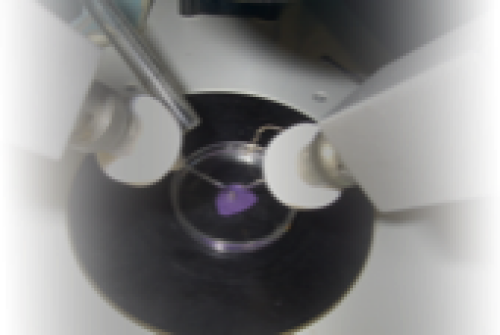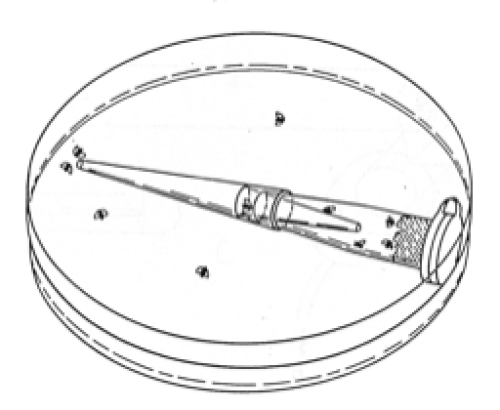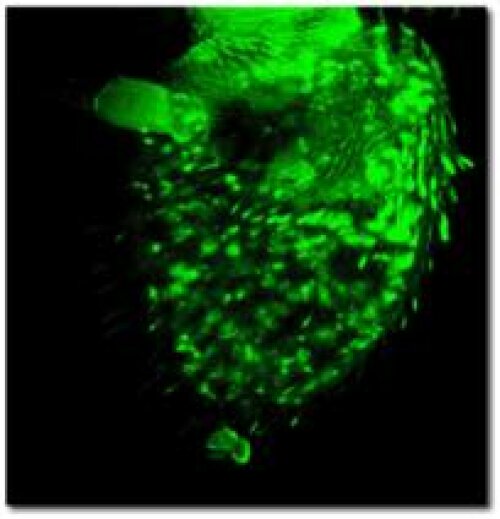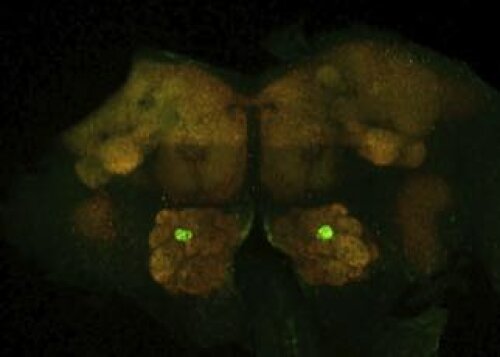
Our research focuses on odor recognition in the fruit fly Drosophila melanogaster. The aim of the projects is to investigate odorant recognition based on the receptor proteins. For this purpose, individual odorant receptors are modified and inserted into a transgenic expression system in Drosophila (Gal4- enhancer method).
We are also interested in the signaling cascade coupled to the olfactory receptors. Particular attention is paid to adaptation, i.e., how olfactory receptors adapt to particular environmental conditions.

In addition to protein biochemistry, electrophysiological measurements are performed from the third antennal segment of adult animals. We use the so-called electroantennogram (EAG). As one of the few laboratories we are also able to perform electrophysiological measurements from the olfactory system of larvae. Using optogenetic stimuli as a non-invasive method, single neurons can be stimulated. For this purpose we use the transgenic expression of light activatable proteins, e.g. channelrhodopsin and adenylate cyclase. In addition, olfactory receptors can be analyzed using the voltage clamp system. For the measurements, the receptors are expressed in Xenopus oocytes and examined, for example, for new agonists or antagonists.

In addition to electrophysiological and protein biochemical investigations, we test adults and larvae for their olfactory behavior. In particular, genetically modified animals show abnormal behavior as soon as the neuronal network for odor recognition is disturbed. Behavioral testing is the final step in a series of studies with transgenically modified animals.
Current publication : Front. Behav. Neurosci. 4:27. doi:10.3389/fnbeh.2010.00027

In addition to pure basic research, we are trying to create technical applications in collaboration with industry that will allow us to identify volatile substances in a room.
Olfaction of Drosophila suzukii
In addition to pure basic research, we are trying to identify volatile substances that can be used to fill traps to control the Japanese cherry vinegar fly, Drosophial suzukii.

In collaboration with Prof. Dr. Burkhardt and Prof. Dr. Ronneberger (the Chair of Pattern Recognition and Image Processing, University of Freiburg), we are creating software that will allow the identification of glomeruli and their position. This software will help to analyze the dynamic processes during aging in the antennal lobule and to perform possible early diagnoses associated with the degradation of neuronal tissue in the olfactory system of the fruit fly in Alzheimer's disease.
In addition to pure basic research, we are working together with the Institute for Space Systems in Stuttgart on a biosensor based on olfactory receptors. In the future, this should be able to detect volatile substances and messenger substances for various malignant diseases at an early stage. On the other hand, the biosensor will be used to analyze different environmental samples. For this research we are in cooperation with the Klinikum Westfalen and the Institute for Biomaterials and Biomolecular Systems of the University of Stuttgart.